←
SPACE WATCH
A Supernova Cocoon Breakthrough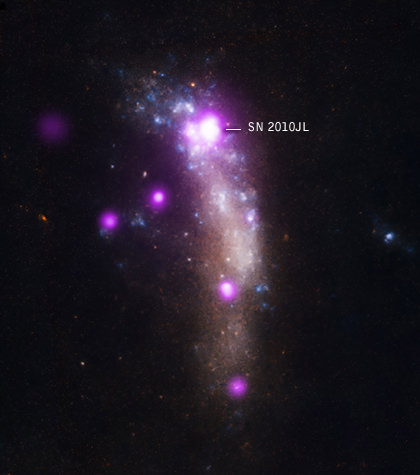 NASA – Observations with NASA’s Chandra X-ray Observatory have provided the first X-ray evidence of a supernova shock wave breaking through a cocoon of gas surrounding the star that exploded. This discovery may help astronomers understand why some supernovas are much more powerful than others.
NASA – Observations with NASA’s Chandra X-ray Observatory have provided the first X-ray evidence of a supernova shock wave breaking through a cocoon of gas surrounding the star that exploded. This discovery may help astronomers understand why some supernovas are much more powerful than others.
On Nov. 3, 2010, a supernova was discovered in the galaxy UGC 5189A, located about 160 million light years away. Using data from the All Sky Automated Survey telescope in Hawaii taken earlier, astronomers determined this supernova exploded in early October 2010 (in Earth’s time-frame).
This composite image of UGC 5189A shows X-ray data from Chandra in purple and optical data from Hubble Space Telescope in red, green and blue. SN 2010jl is the very bright X-ray source near the top of the galaxy.
A team of researchers used Chandra to observe this supernova in December 2010 and again in October 2011. The supernova was one of the most luminous that has ever been detected in X-rays. more> https://tinyurl.com/bpe4u2w
Source: the Net economy
 The Galaxy Evolution Explorer was launched on April 28, 2003. Its mission is to study the shape, brightness, size and distance of galaxies across 10 billion years of cosmic history. The 50-centimeter-diameter (19.7-inch) telescope onboard the Galaxy Evolution Explorer sweeps the skies in search of ultraviolet-light sources.
The Galaxy Evolution Explorer was launched on April 28, 2003. Its mission is to study the shape, brightness, size and distance of galaxies across 10 billion years of cosmic history. The 50-centimeter-diameter (19.7-inch) telescope onboard the Galaxy Evolution Explorer sweeps the skies in search of ultraviolet-light sources.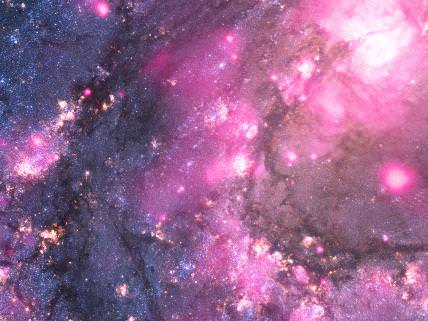 NASA – An extraordinary outburst produced by a black hole in a nearby galaxy has provided direct evidence for a population of old, volatile stellar black holes. The discovery, made by astronomers using data from NASA’s Chandra X-ray Observatory, provides new insight into the nature of a mysterious class of black holes that can produce as much energy in X-rays as a million suns radiate at all wavelengths.
NASA – An extraordinary outburst produced by a black hole in a nearby galaxy has provided direct evidence for a population of old, volatile stellar black holes. The discovery, made by astronomers using data from NASA’s Chandra X-ray Observatory, provides new insight into the nature of a mysterious class of black holes that can produce as much energy in X-rays as a million suns radiate at all wavelengths.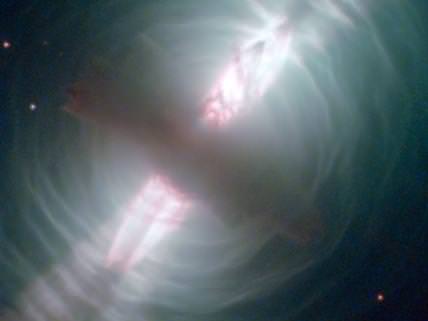 NASA – The NASA/ESA Hubble Space Telescope has been on the forefront of research into the lives of stars like our sun. At the ends of their lives, these stars run out of nuclear fuel in a phase that is called the preplanetary or protoplanetary nebula stage. This Hubble image of the Egg Nebula shows one of the best views to date of this brief, but dramatic, phase in a star’s life.
NASA – The NASA/ESA Hubble Space Telescope has been on the forefront of research into the lives of stars like our sun. At the ends of their lives, these stars run out of nuclear fuel in a phase that is called the preplanetary or protoplanetary nebula stage. This Hubble image of the Egg Nebula shows one of the best views to date of this brief, but dramatic, phase in a star’s life.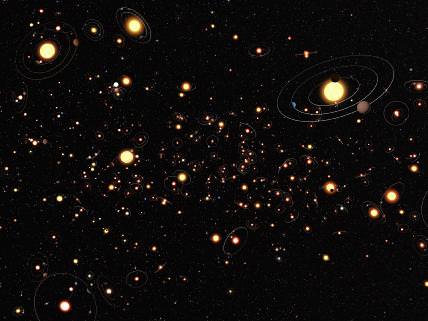 NASA – This artist’s illustration gives an impression of how common planets are around the stars in the Milky Way. The planets, their orbits and their host stars are all vastly magnified compared to their real separations. A six-year search that surveyed millions of stars using the microlensing technique concluded that planets around stars are the rule rather than the exception. The average number of planets per star is greater than one. This means that there is likely to be a minimum of 1,500 planets within just 50 light-years of Earth.
NASA – This artist’s illustration gives an impression of how common planets are around the stars in the Milky Way. The planets, their orbits and their host stars are all vastly magnified compared to their real separations. A six-year search that surveyed millions of stars using the microlensing technique concluded that planets around stars are the rule rather than the exception. The average number of planets per star is greater than one. This means that there is likely to be a minimum of 1,500 planets within just 50 light-years of Earth.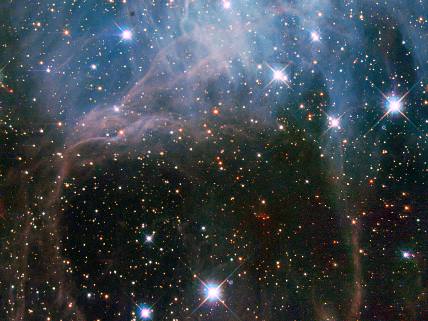 NASA – Bright stars, shining through what looks like a haze in the night sky, are part of a young stellar grouping in one of the largest known star formation regions of the Large Magellanic Cloud, a dwarf satellite galaxy of the Milky Way. The image was captured by the NASA/ESA Hubble Space Telescope‘s Wide Field Planetary Camera 2.
NASA – Bright stars, shining through what looks like a haze in the night sky, are part of a young stellar grouping in one of the largest known star formation regions of the Large Magellanic Cloud, a dwarf satellite galaxy of the Milky Way. The image was captured by the NASA/ESA Hubble Space Telescope‘s Wide Field Planetary Camera 2.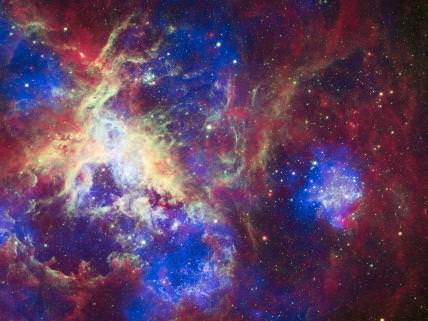 NASA – To celebrate its 22nd anniversary in orbit, the Hubble Space Telescope released a dramatic new image of the star-forming region 30 Doradus, also known as the Tarantula Nebula because its glowing filaments resemble spider legs. A new image from all three of NASA’s Great Observatories–Chandra, Hubble, and Spitzer–has also been created to mark the event.
NASA – To celebrate its 22nd anniversary in orbit, the Hubble Space Telescope released a dramatic new image of the star-forming region 30 Doradus, also known as the Tarantula Nebula because its glowing filaments resemble spider legs. A new image from all three of NASA’s Great Observatories–Chandra, Hubble, and Spitzer–has also been created to mark the event.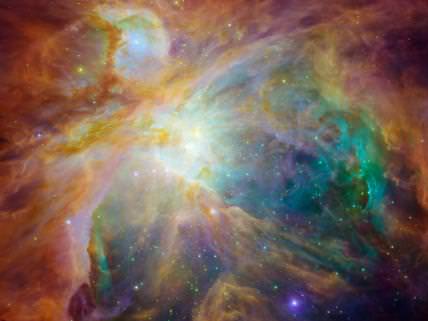 NASA – Baby stars are creating chaos 1,500 light-years away in the cosmic cloud of the Orion Nebula. Four massive stars make up the bright yellow area in the center of this false-color image for NASA’s Spitzer Space Telescope. Green indicates hydrogen and sulfur gas in the nebula, which is a cocoon of gas and dust. Red and orange indicate carbon-rich molecules. Infant stars appear as yellow dots embedded in the nebula.
NASA – Baby stars are creating chaos 1,500 light-years away in the cosmic cloud of the Orion Nebula. Four massive stars make up the bright yellow area in the center of this false-color image for NASA’s Spitzer Space Telescope. Green indicates hydrogen and sulfur gas in the nebula, which is a cocoon of gas and dust. Red and orange indicate carbon-rich molecules. Infant stars appear as yellow dots embedded in the nebula.